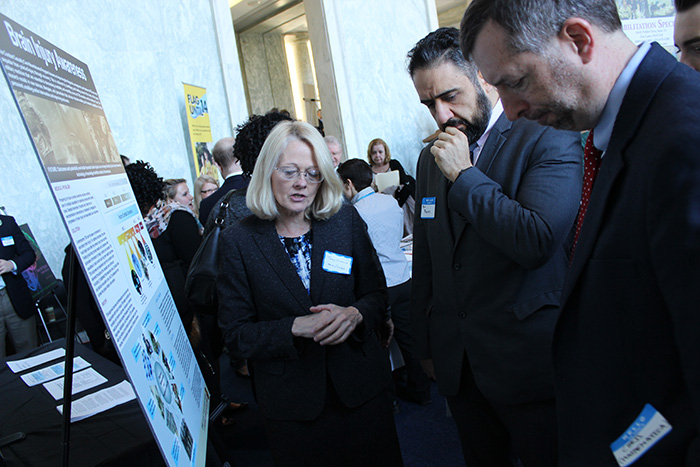Lawmakers Dig into Brain Injuries, Funding Solutions on Capitol Hill

Retired Army Col. Washington Sanchez stood in the main foyer of the Rayburn House Office Building in Washington, D.C., and stared in awe at the wide variety of medical technologies on display.
"This is the kind of stuff that could really help people like me," he said.
A former field artillery commander from 1964 to 1991, Sanchez worked for decades in close quarters to large caliber weaponry and was, by extension, exposed to hundreds of blast incidents. For years after his retirement, the Purple Heart recipient thought he was merely suffering from hearing loss until he found modern science had a name for his condition.
"I had a traumatic brain injury this entire time, and I didn't know until 2015," said Sanchez.
A full slate of TBI studies, therapies, and cutting edge detection technologies was on display for Sanchez and more than 200 other members of the public at the annual "Brain Injury Awareness Day on Capitol Hill" event on March 22. Co-hosted by the Brain Injury Association of America and the bi-partisan Congressional Brain Injury Task Force, the event was conceived 16 years ago as a way to draw attention to a growing problem both inside and outside of the military.
"Our main focus is this: you're at risk, you're important, so how can we help?" said Dr. Tammy Crowder, Neurotrauma and Traumatic Brain Injury Portfolio Manager for the U.S. Army Medical Research Materiel Command's Combat Casualty Care Research Program. "It underpins everything we do."
Annual reported incidents of TBI among active-duty military personnel have more than doubled since 2000, with more than 22,000 cases alone in 2015, the last year for which complete data is available. With that number as a backdrop, "Brain Injury Awareness Day on Capitol Hill" brought together more than 50 hospitals, non-profit organizations, vendors, corporate partners and government entities to share new and evolving research with the American public.
"This is the kind of groundbreaking research we need in this field," said Rep. Gus Bilirakis during Crowder's demonstration of the I-Portal PAS tool, a device that uses a virtual-reality headset to assess possible brain injury by measuring a series of oculo-motor pathways.
For someone like Sanchez, who spent a lifetime in the military, there's comfort in knowing it's never too late to equip yourself with the knowledge required to move forward.
"All those years I was covering my ears when I should have been protecting my brain," said Sanchez. "Now I know – and now everybody else does, too."














